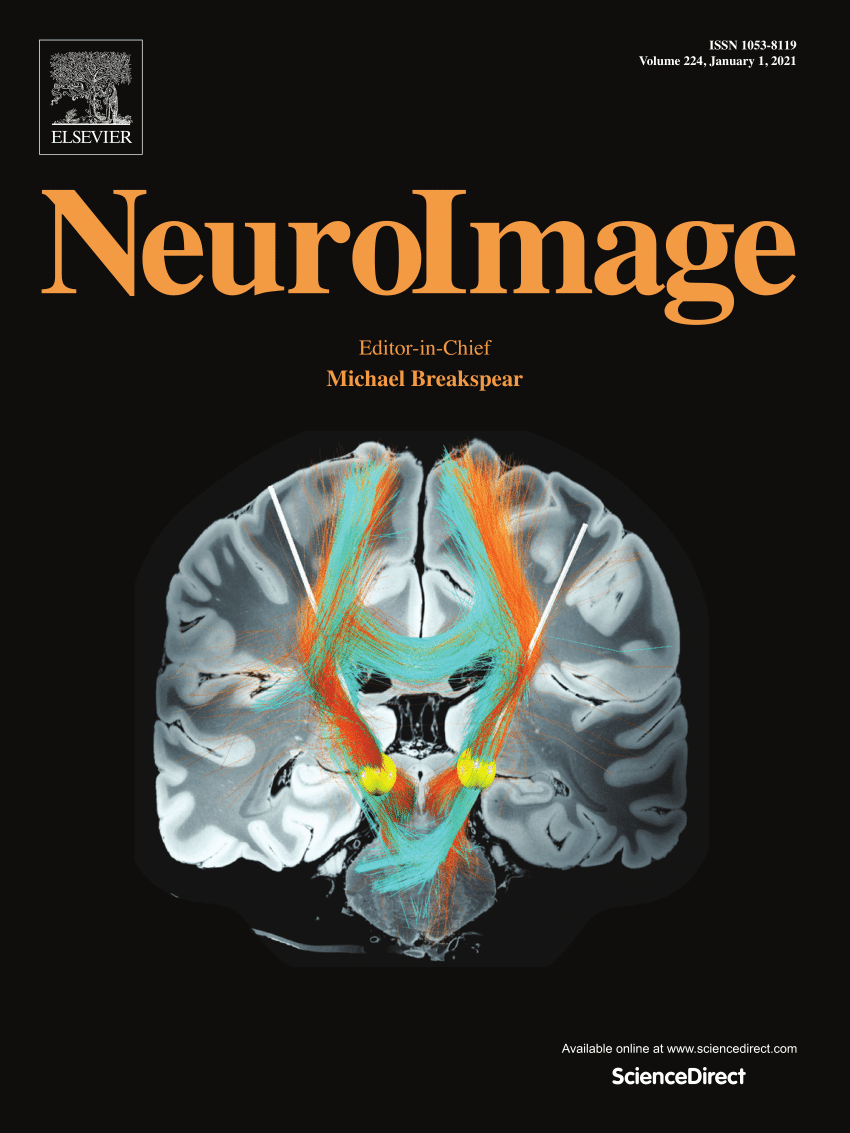Neural signatures underlying the effect of social structure on empathy and altruistic behaviors
IF 4.7
2区 医学
Q1 NEUROIMAGING
引用次数: 0
Abstract
Humans inhabit complex social networks, monitoring social structures that encompass both direct and indirect relationships. However, previous research primarily focused on direct relationships, leaving the neural basis of how social structure influences socioemotional processes understudied. This study addressed this gap by investigating the neural pathways underlying the influence of social structure on empathy and altruistic behaviors. During fMRI scanning, participants viewed painful or non-painful stimulation to innocent strangers who shared preferences with targets who had either treated participants fairly or unfairly. Afterwards, participants rated the pain experienced by these innocents and shared money with other innocents. Participants showed reduced empathic and altruistic responses toward innocents resembling unfair (vs. fair) targets, accompanied by heightened activation in regions crucial for emotion regulation and mentalizing, such as the lateral and medial prefrontal cortex. Furthermore, whole-brain and local neural patterns in the anterior insula and premotor cortex robustly discriminated painful (but not non-painful) stimulation of different innocents, suggesting that social structure altered emotional and sensorimotor aspects of empathy. These alterations might be driven by top-down regulation, as indicated by heightened functional connectivity between the lateral prefrontal cortex and sensorimotor areas, as well as between the anterior insula and subgenual anterior cingulate cortex when witnessing the pain of innocents resembling fair (vs. unfair) targets. Together, our work is the first to uncover the neural underpinnings through which human empathy and altruistic behaviors are shaped by social structure beyond direct self-other relationships.
社会结构对共情和利他行为影响的神经特征。
人类居住在复杂的社会网络中,监控着包含直接和间接关系的社会结构。然而,之前的研究主要集中在直接关系上,而对社会结构如何影响社会情绪过程的神经基础研究不足。本研究通过研究社会结构对共情和利他行为影响的神经通路来弥补这一空白。在fMRI扫描过程中,参与者观看了对无辜陌生人的痛苦或非痛苦刺激,这些陌生人与公平或不公平对待参与者的目标有相同的偏好。之后,参与者对这些无辜者所经历的痛苦进行评级,并与其他无辜者分享钱。参与者对类似于不公平(相对公平)目标的无辜者表现出减少的移情和利他反应,伴随着对情绪调节和心智化至关重要的区域,如外侧和内侧前额叶皮层的激活增强。此外,大脑前部岛叶和运动前皮层的全脑和局部神经模式强烈地区分了不同无辜的痛苦(但不是非痛苦)刺激,这表明社会结构改变了共情的情感和感觉运动方面。这些变化可能是由自上而下的调节驱动的,正如在看到与公平(与不公平)目标相似的无辜者的疼痛时,外侧前额叶皮层和感觉运动区域之间以及前脑岛和亚属前扣带皮层之间的功能连接增强所表明的那样。总之,我们的研究首次揭示了人类同理心和利他行为是由直接的自我与他人关系之外的社会结构塑造的神经基础。
本文章由计算机程序翻译,如有差异,请以英文原文为准。
求助全文
约1分钟内获得全文
求助全文
来源期刊

NeuroImage
医学-核医学
CiteScore
11.30
自引率
10.50%
发文量
809
审稿时长
63 days
期刊介绍:
NeuroImage, a Journal of Brain Function provides a vehicle for communicating important advances in acquiring, analyzing, and modelling neuroimaging data and in applying these techniques to the study of structure-function and brain-behavior relationships. Though the emphasis is on the macroscopic level of human brain organization, meso-and microscopic neuroimaging across all species will be considered if informative for understanding the aforementioned relationships.
 求助内容:
求助内容: 应助结果提醒方式:
应助结果提醒方式:


